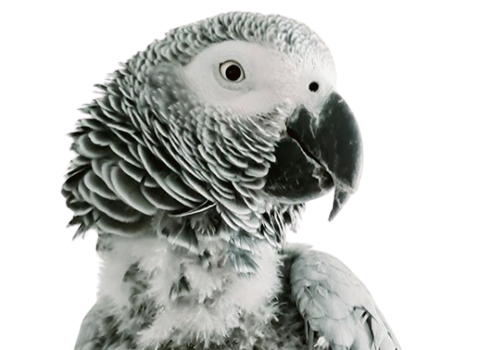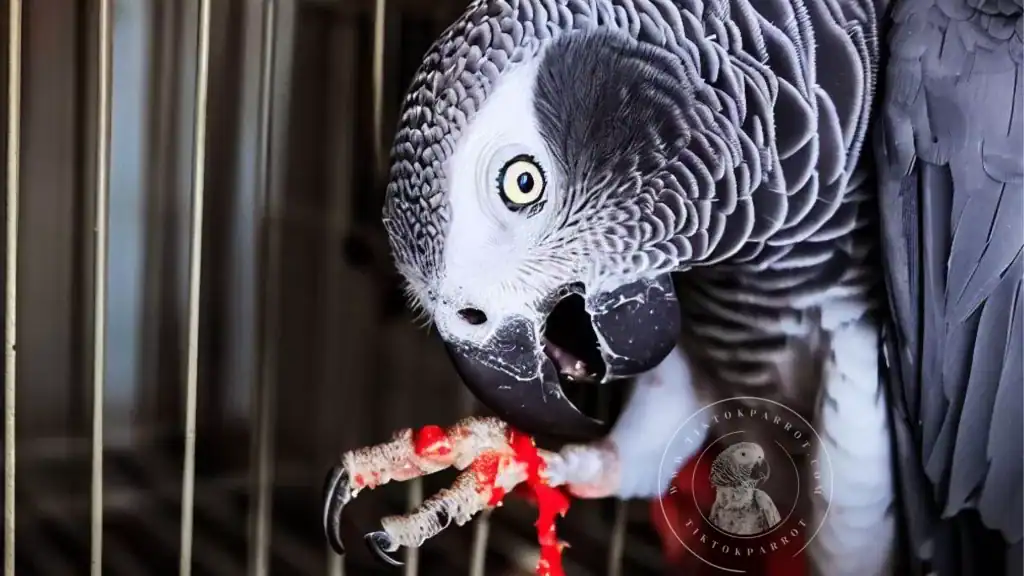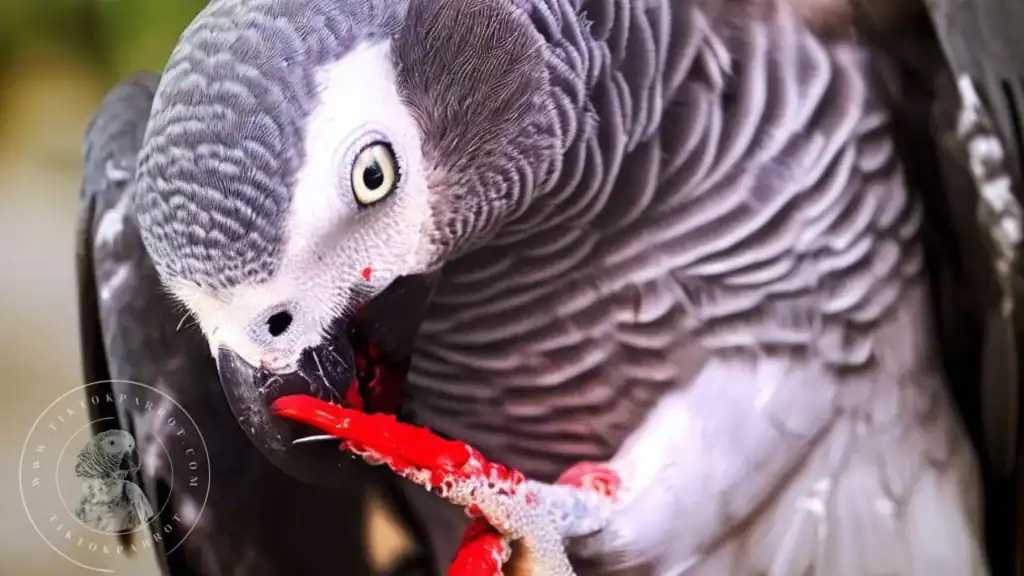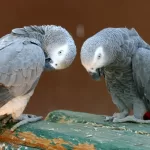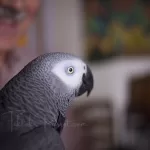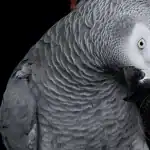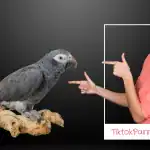It might be news to most of you that animals are actually capable of practicing self-harm. Birds, in particular, may not be the first thing you think about when you imagine an animal equivalent of depression. But it is a fact that birds are very easily misunderstood.
Discover the reasons behind self-harming in African Grey parrots, how to identify it, and effective strategies for preventing and managing this concerning behavior.
The African Grey Parrot is known to be on the honors list for one of the most intelligent kinds of parrot, and that’s one of the main reasons that people would love to get one for themselves. Unfortunately, not many people are aware that intelligent birds can require high maintenance care, and unpreparedness can work out very badly for both the parrot and its human owners.
George is a Congo African Grey Parrot that was rescued from an abusive bird owner. He was found in a filthy cage, unable to use his wings and legs, and instead moved about by planting his beak on the ground and dragging himself from point A to point B.
He had almost no feathers left and did not talk at all, which is highly abnormal for an African Grey Parrot. As it turns out, George was suffering from neglect, and that’s pretty horrible for creatures who live in constant communication with humans or others of their kind.
The shelter that picked up George immediately brought in a veterinarian to have a look at the parrot, and the latter was diagnosed with a bacterial infection. Over the course of several days, weeks, and months, the people that ran the shelter made it a point to build long-overdue trust with George.
They got him on antibiotics and placed him in a special fixture that prevented him from biting or plucking at his own feathers. George did not talk, at first, but slowly, he began interacting with other birds in the aviary where he lived.
It’s not your average fairytale ending. George never regained full use of his wings and legs, and he talks considerably less than a normal, healthy African Grey, but he has stopped cowering away from human touch and is regaining a full coat of feathers.
The bird shelter has implemented stringent application processes for prospective pet owners to prevent pulling the rug out from under George—or other abused birds—once again. And yes, George isn’t the only one.
Some people don’t understand why their African Greys are so noisy, or why they don’t talk enough, or why they don’t seem to be interesting at all. In any case, their expectations fall short of reality, and they lose motivation to care for the bird.
Presently, bird lovers are placing a lot of effort into educating pet owners about the demands of bird care, especially with parrots, as they tend to require high-maintenance care that people are usually not prepared for.
George the African Grey Parrot has far to go in terms of trauma recovery, but those in charge of his care remain hopeful that they will see the day he shakes his tailfeathers—happy.
Below we’ll delve into the causes, signs, and prevention methods for African Grey self harming, as well as discuss the importance of seeking professional help. So, let’s shake our tailfeathers and explore this topic further!
Shaking Your Tailfeathers: An African Grey Self Harming
These captivating birds can sometimes display troubling behaviors, such as self-harming. In this comprehensive article, we will delve into the root causes of self-harming in African Greys, how to recognize the signs, and the most effective strategies for preventing and managing this distressing behavior.
My aim is to provide you with the knowledge and tools necessary to better understand and care for your feathered companion, ensuring their well-being and happiness.
I. Introduction
A. Brief background on African Grey parrots
African Grey parrots are known for their striking appearance and incredible intelligence. They are often sought after as pets due to their ability to mimic human speech and display a range of emotions. However, these beautiful birds can sometimes exhibit distressing behaviors, such as self-harming.
B. Introduction to the problem of self-harming
In this section, we will discuss the reasons behind self-harming behaviors in African Greys, how to identify these behaviors, and the best strategies for preventing and managing them. My goal is to help you better understand and care for your feathered friend.
II. Reasons for self-harming behavior
A. Physical issues
One possible cause of self-harming behaviors in African Greys is an underlying physical problem. This may include skin infections, allergies, or parasites that cause itching and discomfort. It’s essential to consult a veterinarian if you suspect a medical issue is causing your parrot’s self-harming behavior.
B. Environmental factors
Environmental factors, such as poor diet, lack of exercise, or an inappropriate living space, can also contribute to self-harming behaviors in African Greys. A balanced diet, ample room to explore, and a variety of toys and activities can help to alleviate boredom and stress.
C. Psychological factors
African Greys are sensitive and intelligent creatures, which makes them prone to developing psychological issues, such as anxiety, depression, or phobias. These emotional problems can lead to self-harming behaviors as a coping mechanism.
III. Identifying self-harming behaviors
A. Signs of self-harming
Some common signs of self-harming behavior in African Greys include:
- Over preening, which results in excessive feather loss or damage
- Plucking or barbering feathers, leaving bald patches on the body
- Self-mutilation, such as biting or tearing at the skin
B. Distinguishing between normal preening and self-harming
It’s important to differentiate between normal preening behavior and self-harming. Preening is a natural grooming process that helps keep feathers clean and healthy. However, when preening becomes excessive or results in injury, it may indicate a problem that requires intervention.
IV. Strategies for prevention and management
A. Medical treatment
If an underlying medical issue is causing your African Grey to self-harm, your veterinarian may prescribe medications or other treatments to address the problem. It’s crucial to follow their recommendations to ensure your parrot’s well-being.
B. Environmental adjustments
Making adjustments to your parrot’s environment can help to reduce self-harming behaviors. This may include providing a larger cage, offering more toys and activities, or improving their diet.
C. Behavioral modifications
Behavioral modifications, such as positive reinforcement, can be helpful in managing self-harming behaviors in African Greys. You can consult with an avian behaviorist or your veterinarian to develop a personalized training plan that addresses your parrot’s specific needs.
V. My Final Thoughts
Self-harming behaviors in African Grey parrots can be a distressing experience for both the bird and its owner. By understanding the possible causes and identifying the signs of self-harming, you can take the necessary steps to prevent and manage this behavior. Remember to consult with a veterinarian or an avian behaviorist for professional guidance and support.
Below I would answer some of the most frequently asked questions about African greys self harming;
- Q: What are African Grey parrots known for?
A: African Grey parrots are known for their striking appearance, incredible intelligence, ability to mimic human speech, and display a range of emotions. - Q: What is self-harming behavior in African Greys?
A: Self-harming behavior in African Greys includes over preening, feather plucking or barbering, and self-mutilation such as biting or tearing at the skin. - Q: What are some possible causes of self-harming behavior in African Greys?
A: Possible causes of self-harming behavior in African Greys include physical issues, environmental factors, and psychological factors. - Q: How can physical issues lead to self-harming behavior in African Greys?
A: Physical issues, such as skin infections, allergies, or parasites, can cause itching and discomfort, leading to self-harming behavior. - Q: How can environmental factors contribute to self-harming behavior in African Greys?
A: Environmental factors, like poor diet, lack of exercise, or an inappropriate living space, can contribute to boredom and stress, which may lead to self-harming behaviors. - Q: How can psychological factors cause self-harming behavior in African Greys?
A: African Greys are sensitive and intelligent creatures, which makes them prone to developing psychological issues, such as anxiety, depression, or phobias. These emotional problems can lead to self-harming behaviors as a coping mechanism. - Q: What are some common signs of self-harming behavior in African Greys?
A: Common signs of self-harming behavior include excessive feather loss or damage, bald patches on the body, and biting or tearing at the skin. - Q: How can you differentiate between normal preening and self-harming behavior?
A: Normal preening is a natural grooming process that helps keep feathers clean and healthy. However, when preening becomes excessive or results in injury, it may indicate a problem that requires intervention. - Q: What should you do if you suspect a medical issue is causing your parrot’s self-harming behavior?
A: Consult a veterinarian for a proper diagnosis and treatment plan to address the underlying medical issue. - Q: How can medical treatment help prevent and manage self-harming behavior in African Greys?
A: If an underlying medical issue is causing the self-harming behavior, a veterinarian may prescribe medications or other treatments to address the problem and improve the parrot’s well-being. - Q: What environmental adjustments can be made to help reduce self-harming behaviors?
A: Providing a larger cage, offering more toys and activities, and improving the parrot’s diet can help reduce self-harming behaviors. - Q: How can behavioral modifications help manage self-harming behaviors in African Greys?
A: Behavioral modifications, such as positive reinforcement, can be helpful in managing self-harming behaviors. Consult with an avian behaviorist or your veterinarian to develop a personalized training plan that addresses your parrot’s specific needs. - Q: What is the importance of understanding the possible causes of self-harming behavior in African Greys?
A: Understanding the possible causes can help you identify the signs of self-harming behavior and take the necessary steps to prevent and manage this distressing issue. - Q: Can a poor diet contribute to self-harming behavior in African Greys?
A: Yes, a poor diet can contribute to self-harming behavior by causing stress, malnutrition, and potential health issues. - Q: Is it normal for African Greys to preen their feathers?
A: Yes, preening is a normal grooming process that helps keep their feathers clean and healthy. However, excessive preening or preening that results in injury may indicate a problem that requires intervention. - Q: How can you tell if your African Grey is experiencing anxiety or depression?
A: Signs of anxiety or depression in African Greys may include self-harming behaviors, changes in vocalization, appetite changes, lethargy, or aggression. If you suspect your parrot is experiencing psychological distress, consult a veterinarian or avian behaviorist for guidance. - Q: Can a lack of exercise contribute to self-harming behavior in African Greys?
A: Yes, a lack of exercise can lead to boredom and stress, which may contribute to self-harming behavior in African Greys. - Q: How important is it to provide a variety of toys and activities for your African Grey?
A: Providing a variety of toys and activities is essential for keeping your African Grey mentally stimulated, engaged, and preventing boredom, which can lead to self-harming behavior. - Q: What should you do if your African Grey continues to self-harm despite medical treatment and environmental adjustments?
A: If self-harming behavior persists despite medical treatment and environmental adjustments, consult an avian behaviorist or your veterinarian for further guidance and additional behavioral modification strategies. - Q: Can self-harming behavior in African Greys be completely eliminated?
A: While it’s difficult to guarantee complete elimination of self-harming behavior, early intervention and a combination of medical treatment, environmental adjustments, and behavioral modifications can significantly reduce or manage these behaviors, improving your parrot’s well-being.
If you found this blog helpful, It would be great if you could share it with your family and friends who might find it useful as well.
You might like to read these as well.
Signs that an African Grey is unhappy with you
Why African Grey Parrots Pluck Feathers
Mental Illnesses in African Greys and How to Spot Them
Why an African Grey Parrot Bites and What to do
What diseases can African Grey parrots get?
What Do You Do If A Parrot’s Beak Breaks?
The Hidden Dangers of a Poor Diet for African Grey Parrots
How to Gain the Love of an African Grey Parrot
The social behavior of African grey parrots in the wild and in captivity
The Hidden Dangers of Owning an African Grey Parrot: What You Need to Watch Out For
Is Your African Grey a Jealous Bird? Here’s What You Need to Know!
African Greys 101: Avoid These Common Mistakes and Keep Your Parrot Thriving!
For more useful content about African grey parrots, you can subscribe my site with your email to get notification upon publishing a new blog, the subscribe box you can see on the right side of this page. Also if you get an alert on your web browser while browsing my site, allow it and that will also give you an alert whenever I publish a new blog. 🙂
Stay safe and much love !

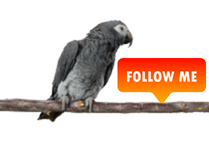
If you are interested in supporting me, kindly consider utilizing my affiliate link for your Amazon purchases. Your support would be greatly appreciate.
